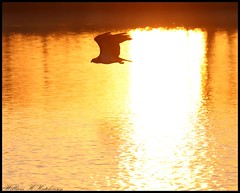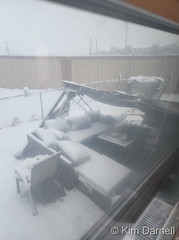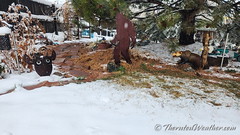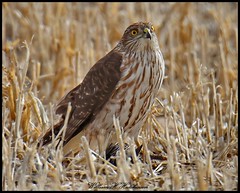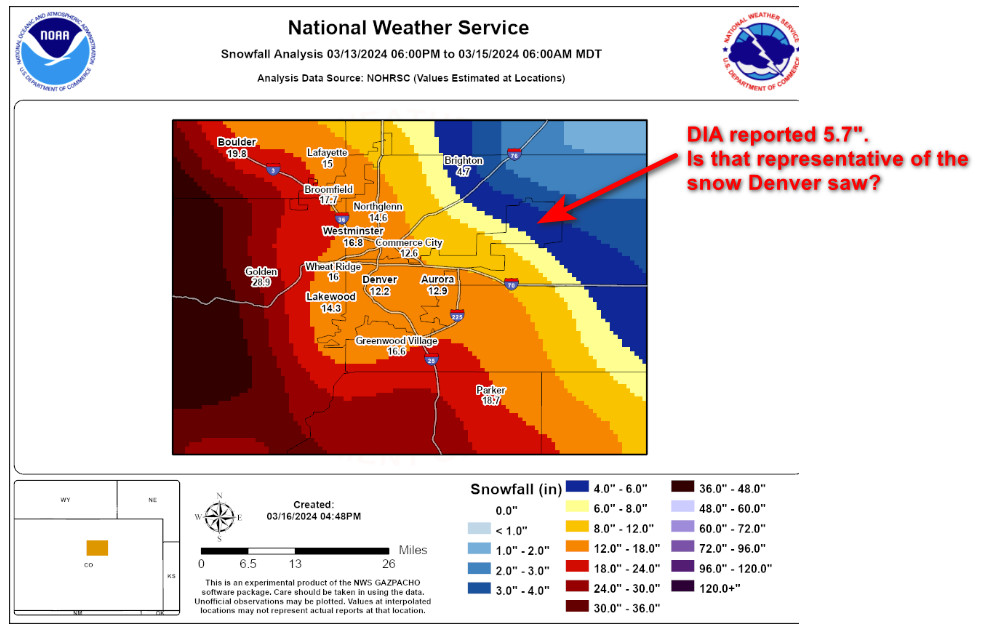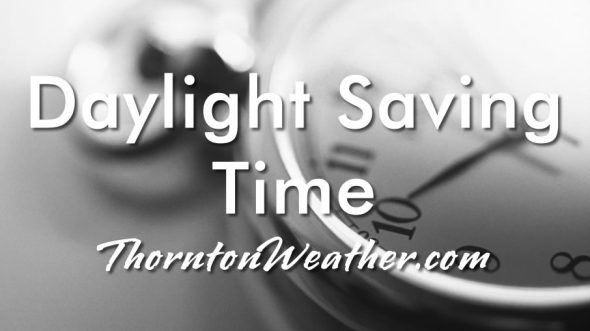
March weather can be gorgeous but it can also be nasty with a healthy dose of any of the four seasons. Our look back at this week highlights this with a number of notable weather events from powerful, damaging winds to landspout tornadoes and of course monstrous snow storms.
From the National Weather Service:
9-19
In 1906…an extended cold and blustery period occurred with light snow totaling 14.4 inches over 11 consecutive days. The greatest amount of snow on a single day was 4.0 inches on the 15th. Only a trace of snow fell on the 12th and 17th. High temperatures were below freezing for the entire period. The coldest were 14 degrees on the 16th and 18 degrees on the 17th. Both readings were record low maximums for the dates. Low temperatures were mostly in the single digits. The coldest were 2 degrees below zero on the 16th and 5 degrees below zero on the 19th. Northeast winds were sustained to 22 mph on the 9th. North winds were sustained to 36 mph on the 10th…32 mph on the 13th…and 22 mph on the 15th.
17
In 1966…high winds caused extensive minor damage across metro Denver. A light plane was overturned at Stapleton International Airport where northwest wind gusts to 55 mph were recorded. Winds gusted to 56 mph at Table Mesa in Boulder
In 1989…strong winds raked metro Denver. West wind gusts to 49 mph were clocked at Stapleton International Airport.
In 2003…the first tornado of the season was sighted near Strasburg. The small landspout touched down briefly…but caused no damage.
17-18
In 1923…4.2 inches of snow fell over downtown Denver. Northwest winds were sustained to 45 mph with gusts to 49 on the 17th. Low temperature of zero degrees on the 18th was the lowest of the month that year.
In 1944…heavy snow fell across metro Denver. The storm started as rain on the 17th…but soon turned to snow. Snowfall amounts totaled 8.5 inches in downtown Denver and 11.0 inches at Stapleton Airport. The highest wind recorded during the storm was 23 mph on the 17th.
In 1961…a major winter storm dumped 10.7 inches of snow at Stapleton Airport. Most of the snow…9.7 inches…fell on the 18th. Winds were light.
In 1994…strong winds buffeted metro Denver. West winds gusted to 51 mph at Stapleton International Airport on the 17th. Other significant wind gusts included 85 mph atop Squaw Mountain south of Idaho Springs…and 82 mph at Rollinsville southwest of Boulder…both on the 18th.
In 1996…a second storm in less than 3 days dumped heavy snow in the mountains and foothills again…but snowfall amounts across metro Denver ranged from only 2 to 4 inches. The heavy snowfall resulted in several traffic accidents along I-25 and I-70…south and west of Denver respectively. The major accidents involved at least 30 cars and resulted in several minor injuries. The accidents closed both highways for a time. Snowfall totals included 13 inches at Evergreen and 10 inches at Conifer. Snowfall totaled only 0.7 inch at the site of the former Stapleton International Airport. At Denver International Airport… North winds gusted to 28 mph on the 17th and 39 mph on the 18th.
In 2016…a combination of enhanced banding associated with a strong upper level jet stream…and low level upslope following the passage of a cold front…produced heavy snowfall in northern mountains as well as in and near the foothills of Boulder County. Storm totals included: 19.5 inches near Ward…16 inches near Allenspark…13.5 inches near Eldorado Springs; 13 inches at the National Weather Service Office in Boulder and 5 miles east of Boulder; 12.5 inches at Winter Park Ski Resort…12 inches at Eldora Ski Area; 11 inches…7 miles south of Lyons and at Rollinsville; 10.5 inches at Aspen Springs… and 9.5 inches near Blackhawk. In Denver and the surrounding suburbs…storm totals included: 8.5 inches in Broomfield…Lafayette and 5 miles northeast of Westminster; 7 inches near Northglenn…6.5 inches in Thornton and northwest Denver; with 6 inches at Firestone. At Denver International Airport…an official measurement of 4.7 inches of snow was observed.
17-19
In 1933…rain changed to snow on the evening of the 17th and continued through mid-day of the 19th. Snowfall totaled 5.6 inches with 0.83 inch of precipitation in in the city. North winds were sustained to 38 mph with gusts to 46 mph on the 18th and to 30 mph with gusts to 43 mph on the 19th.
In 2003…one of the worst blizzards since historic records began in 1872 struck metro Denver with a vengeance. Heavy wet snow accumulating to around 3 feet in the city and to more than 7 feet in the foothills brought transportation to a near standstill. North winds sustained to 30 mph with gusts as high as 41 mph produced drifts to 6 feet in the city. The estimated cost of property damage alone…not including large commercial buildings…was 93 million dollars… Making it the costliest snowstorm ever. Mayor Wellington Webb of Denver said…”this is the storm of the century…a backbreaker…a record breaker…a roof breaker.” Two people died in Aurora from heart attacks after shoveling the heavy wet snow. The National Guard sent 40 soldiers and 20 heavy duty vehicles to rescue stranded travelers along I-70 east of Gun Club Road. The heavy wet snow caused roofs of homes and businesses to collapse. The snow also downed trees… Branches…and power lines. Two people were injured when the roofs of their homes collapsed. In Denver alone…at least 258 structures were damaged. In Arvada…a roof collapse at west gate stables killed a horse. Up to 135 thousand people lost power during the storm…and it took several days for power to be restored in some areas. Denver International Airport was closed…stranding about 4000 travelers. The weight of the heavy snow caused a 40-foot gash in a portion of the tent roof…forcing the evacuation of that section of the main terminal building. Avalanches in the mountains and foothills closed many roads…including I-70…stranding hundreds of skiers and travelers. Along I-70…an avalanche released by the Colorado department of transportation…blocked the interstate in both directions for several hours. Several residences between Bakerville and Silver Plume were evacuated because of the high avalanche danger. At Eldora Ski Area…270 skiers were stranded when an avalanche closed the main access road. After the storm ended…a military helicopter had to ferry food to the resort until the road could be cleared. The heavy snow trapped thousands of residents in their foothills homes in Jefferson County for several days. Two homes burned to the ground when fire crews could not reach the residences. Some schools remained closed well into the following week. The storm officially dumped 31.8 inches of snow at the site of the former Stapleton International Airport…the most snowfall from a single storm since the all-time record snowfall of 37.5 inches on December 4-5…1913. The storm made March 2003 the snowiest March on record…the 4th snowiest month on record… And the 5th wettest March on record. The 22.9 inches of snow on the 18th into the 19th was the greatest 24 hour snowfall ever recorded in the city during the month of March. The storm was also a drought-buster…breaking 19 consecutive months of below normal precipitation in the city. Snowfall across metro Denver ranged from 2 feet to more than 3 feet. The highest amounts included: 40 inches in Aurora…38 inches in centennial and 6 miles east of Parker…37 inches at Buckley AFB…35 inches in southwest Denver…34 inches in Louisville… 32 inches in Arvada…31 inches in Broomfield and Westminster… And 22.5 inches in Boulder. In the foothills…snowfall ranged from 3 feet to more than 7 feet. Some of the most impressive storm totals included: 87.5 inches atop Fritz Peak and in Rollinsville…83 inches at cabin creek…74 inches near Bergen Park…73 inches northwest of Evergreen…72 inches in Coal Creek Canyon…70 inches at Georgetown…63 inches near Jamestown…60 inches near Blackhawk…55 inches at Eldora Ski Area…54 inches 8 miles west of Sedalia…and 46.6 inches at Ken Caryl Ranch. The storm was the result of a very moist…intense slow moving pacific system which tracked across the four corners and into southeastern Colorado…which allowed deep easterly upslope flow to form along the Front Range.
18
In 1883…0.3 inch of snow fell in downtown Denver. This was the only measurable snowfall of the month.
In 1903…rain changed to sleet and then to snow…which became heavy. Post-frontal snowfall totaled 7.0 inches over the city. North winds were sustained to 51 mph with gusts as high as 60 mph.
In 1905…northwest winds were sustained to 42 mph.
In 1914…northeast winds were sustained to 46 mph with gusts to 56 mph behind a strong cold front. Snowfall was 3.4 inches over the city…but most of the snow melted as it fell. The estimated amount of melted snow was 8.1 inches.
In 1920…a terrific windstorm occurred along the eastern foothills. Two deaths were attributed to the storm and some damage occurred. Both Denver and Boulder were affected by the strong winds. West winds were sustained to 51 mph with gusts as high as 66 mph in downtown Denver. The strong winds did considerable damage to property… Wires…plate glass windows…and indirectly loss by fire. The wind caused the death of one young girl by toppling the side of a brick building on her as she was standing on a corner waiting for a car. The wind was also responsible for several severe auto accidents due to blowing debris into the streets and blowing dust and dirt into the eyes of drivers.
In 1954…west winds at sustained speeds of 40 mph and gusts as high as 56 mph produced some blowing dust at Stapleton Airport.
In 1979…heavy snow totaled 4 to 12 inches along the Front Range from Denver north. I-25 was closed for a brief time between Denver and Cheyenne. New snowfall totaled 4.3 inches at Stapleton International Airport where north winds gusted to 29 mph.
In 1998…a major winter storm dumped heavy snow over areas west from I-25 to the continental divide as strong upslope conditions developed. Two to 3 1/2 feet of snow fell in the foothills with 1 to 2 feet reported in west metro Denver. Snowfall totals included: 38 inches at Silver Spruce Ranch…2 miles south of Ward; 35 inches at Aspen Springs; 33 inches near Blackhawk; 30 inches at Eldora; 29 inches in Coal Creek Canyon; 27 inches at Conifer… Chief Hosa…and Nederland; 25 inches at Rollinsville and Gross Reservoir; 21 inches at Evergreen; and 15 to 19 inches at Broomfield…Lakewood…and Table Mesa in Boulder. Elsewhere across metro Denver…snowfall ranged from 8 to 14 inches. Snowfall totaled only 7.9 inches at the site of the former Stapleton International Airport. East winds gusted to 31 mph at Denver International Airport.
18-19
In 1927…heavy snowfall was 6.5 inches in downtown Denver. Northwest winds were sustained to 28 mph on the 18th.
In 1974…heavy snowfall totaled 5.8 inches at Stapleton International Airport where northeast winds gusted to 33 mph on the 19th.
In 2018…a storm system brought locally heavy snowfall to the Palmer Divide south of Denver. Storm totals included 10.5 inches in Franktown…10 inches near Elizabeth and The Pinery…9 inches at Ponderosa Park…with 5 inches in Lone Tree. At Denver International Airport…just 0.7 inch of snowfall was observed.
18-20
In 2020…a powerful storm system brought blizzard conditions to the plains east of Interstate 25. Numerous roads closures were posted east of Interstate 25 and over the Palmer Divide. Highways closings included portions of eastbound interstates 70 and 76 due to strong winds and whiteout conditions. I-70 was also closed westbound into the mountains due to heavy snow and numerous accidents. In the Front Range Foothills…storm totals included: 23 inches near Nederland…22 inches at Aspen Springs…18.5 inches near Jamestown…17 inches at Genesee…15 inches at Evergreen and 12 inches at Bergen Park. Along the urban corridor…storm totals included: 11 inches at Centennial and Ponderosa Park; 10.5 inches at Lone Tree…10 inches near Commerce City…with 5 to 9 inches elsewhere including 6 inches at Denver International Airport. At Greeley and Denver International Airport…north-northwest winds gusted to 49 mph.
18-21
In 1907…a warm spell resulted in 6 daily temperature records. Record maximum temperatures of 82 degrees occurred on the 18th with 81 degrees on the 19th and 80 degrees on the 20th. Record high minimum temperatures of 52 degrees occurred on the 19th and 20th with 54 degrees on the 21st.
19
In 1969…high winds buffeted the Front Range foothills causing damage in Boulder and Jefferson counties. A freight train was derailed near the entrance to a canyon 20 miles west of Denver when some empty cars were caught on a curve by a gust of wind. Two light planes were heavily damaged at Jefferson County Airport. Winds gusted to 105 mph at the National Center for Atmospheric Research in Boulder…62 mph in downtown Boulder…and 80 to 90 mph at Boulder airport. Northwest winds gusted to 49 mph at Stapleton International Airport.
In 1976…northwest winds gusted to 55 mph in Denver with stronger winds along the foothills. The strong cold winds kicked up some blowing dust…reducing the visibility to near zero at times at Stapleton International Airport.
In 1982…high winds across metro Denver caused minor damage to a few mobile homes at Lowry Air Force Base. West wind gusts reached 51 mph at Stapleton International Airport where visibility was briefly reduced to 1/4 mile in blowing dust.
In 1995…strong winds associated with a pacific cold front blew across metro Denver. A west wind gust to 48 mph was recorded at Denver International Airport. Winds gusted to 59 mph at the site of the former Stapleton International Airport.
In 2010…a storm system produced deep upslope and brought heavy snow to areas in and near the Front Range. The foothills of Boulder and Jefferson counties were the hardest hit. Storm totals included: 26 inches at Coal Creek Canyon…25.5 inches…4 miles southeast of Conifer; 25 inches at Genesee…24.5 inches near Kittredge… 23.5 inches…6 miles east of Nederland…20.5 inches…3 miles west of Jamestown…5 miles southeast of aspen park and 5 miles southeast Idaho Springs; and 18 inches near Ralston Buttes. In and around Denver…storm totals included: 15 inches in Golden; 12.5 inches in Boulder…11.5 inches at lone tree; 10.5 inches near Castle Pines; 11 inches…6.5 miles southwest of Castle Rock; 10 inches near Englewood…Highlands Ranch and 3 miles southwest of Wheat Ridge; 9 inches…4 miles west of Arvada…Broomfield…Centennial…Elizabeth and Westminster; 8.5 inches…in southeast Denver and Littleton; 7.5 inches in Louisville and near Thornton; 7 inches…4 miles south of Aurora…Lakewood and Niwot; 6.5 inches…4 miles northwest of Castle Rock…4 miles northwest of Denver and Northglenn; 6 inches in Brighton and 5 miles southeast of Sedalia. Officially… 1.7 inches of snow was measured at Denver International Airport.
19-20
In 1912…post-frontal heavy snowfall of 6.3 inches was measured in downtown Denver. North winds were sustained to 28 mph with gusts to 30 mph on the 19th. The strong cold front plunged temperatures from a high of 60 degrees on the 19th to a low of 1 degree on the 20th.
In 1959…a major storm dumped heavy snowfall of 7.7 inches on Stapleton Airport where north winds gusting to 44 mph caused much blowing and drifting snow. Many highways were blocked…and there was damage to phone lines along the South Platte River. The storm started as rain and changed to heavy wet snow…which froze on the lines causing the poles to break. The storm caused 2 deaths over eastern Colorado.
In 2006…strong northerly winds…associated with a surface low pressure system that intensified as it moved into the central Great Plains…brought heavy wet snow to the eastern foothills and northeastern plains of Colorado. The hardest hit areas included the foothills of Boulder and Gilpin counties. Storm totals included: 15 inches at Rollinsville… 14 inches at Aspen Springs…12.5 inches near Nederland…and 5.7 inches in the Denver Stapleton area. Strong winds…heavy snow…and poor visibility forced the closure of Interstate 70 from Denver east to the Kansas state line. North winds gusted to 32 mph at Denver International Airport on the 19th.
19-21
In 1888…heavy snowfall totaled 8.6 inches over downtown Denver. North winds were sustained to 27 mph on the 19th.
20
In 1915…north winds were sustained to 40 mph with gusts to 42 mph. Only a trace of snow fell.
In 1989…2 to 6 inches of snow fell along the Front Range urban corridor with up to 9 inches in Boulder. Only 1.6 inches of snowfall were measured at Stapleton International Airport where north winds gusted to 36 mph.
Continue reading March 17 to March 23: This Week in Denver Weather History →
 April marks a transition between winter and summer for most of the country but for Denver it is especially true as we can see a stunning variety of weather.
April marks a transition between winter and summer for most of the country but for Denver it is especially true as we can see a stunning variety of weather.


